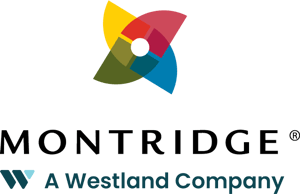When employers seek a unique benefit offering to employees, they often review the concept of "total rewards." A health care spending account is a crucial component of this package.
The Concept Of Total Rewards
When employers seek to provide a unique benefit offering to employees, the conversation of "total rewards" is reviewed.
Total rewards recognize that employee motivation and satisfaction are derived from diverse needs and can be best supported by bundles of different reward components.
Total rewards can be classified as the following:
- Cash compensation (base pay, short and long-term incentives)
- Employee benefits – protection from the financial risks inherent in daily life
- Retirement benefits - long-term savings to support employees with financial security at retirement
- Relational returns – psychological returns employees believe they receive in the workplace (recognition, status, security, challenging work, learning opportunities, team with great co-workers)
Benefits come in all forms of products, variances, and coverage. Often when flexibility is a driver for the employee and cost considerations for the employer, the conversation of a Health Care Spending Account (HCSA) comes up.
Here's why:
- Cost – The employer decides on an allotment per employee for the calendar year and reviews this amount annually. As it's a set amount, the employer knows the financial risk to the company and can budget accordingly.
- Flexibility – Employees can use the funds for whatever is needed most for them and their families. Some prefer extra dental benefits; others prefer more massages. Unlike traditional plans, there are few restrictions, such as cost-sharing or maximums.
How Do Health Care Spending Accounts Work?
A Health Care Spending Account (HCSA) is an excellent option for individuals who want more control over their healthcare spending. Unlike traditional benefits plans, which have predefined coverage limits for different medical and dental procedures, an HCSA allows you to allocate a certain amount of money to cover your healthcare costs each year. This way, you can choose which procedures and treatments you want to cover, and you'll have more flexibility in spending your healthcare dollars.
An employer determines the amount deposited in an employee's HCSA for the year. The employee submits claims for medical expenses to be reimbursed from their HCSA, which the insurer then processes according to the plan rules selected by the employer.
It's important to mention that Health Spending Accounts (HCSAs) are not cash accounts, and employees cannot withdraw from them. The only intended use for HCSA funds is to reimburse eligible medical and dental expenses. Therefore, you can only use the funds to reimburse your eligible claims. If you break the rules, you may be subject to negative tax implications, which we want to avoid.
What can you claim on your health spending account in Canada?
A healthcare spending account is a tax-free savings account as long as it qualifies as a Private Health Services Plan (PHSP) as described by CRA. Benefits received from the plan are non-taxable if PHSP conditions are met. Plan members can enjoy the benefit without declaring it on their income tax return. In most cases, HCSAs are structured to meet the requirements of a PHSP.
If you have out-of-pocket medical expenses not covered by your provincial coverage or benefits plan, you can claim them on your HCSA. What can be claimed on a Health Spending Account may vary depending on the plan design and the guidelines set by the HCSA provider and CRA.
The common expenses which employees can claim on the HCSA include the following:
- prescription medications,
- dental and vision care,
- paramedical services,
- medical devices and equipment,
- psychologist and counselling services.
While HSCA packages share similarities, each benefits provider designs their offerings uniquely. Below, you will find additional information on the most prevalent HCSA provider.
- Manulife Information about the Health Care Spending Account (HCSA)
- Canada Life Healthcare spending accounts
- Sun Life Spending Accounts
CRA guidelines allow a wider scope of eligible expenses. Here are some examples of what can or can’t be reimbursed with the HCSA according to CRA.
Please note that HCSA eligibility can vary depending on your specific HCSA plan and the rules set by your HCSA provider and CRA. It's always best to consult your HCSA provider or review the official CRA guidelines for a comprehensive list of eligible expenses.
Is there variation among Canadian provinces with HCSAs?
There are differences between Canadian provinces in Health Care Spending Accounts (HCSAs). HCSAs are not mandated by provincial legislation but can be part of employee benefits packages. Here are a few factors that differ:
- Provincial employment standards and regulations can affect how HCSAs are offered and administered by employers.
- HCSA tax treatment varies between provinces. Check the tax regulations specific to your province for accurate information.
- Provincial regulations or guidelines can influence medical expenses eligible under HCSAs.
- The extent of provincial health coverage can impact HCSAs.
- The oversight of HCSAs varies between provinces.
Employers and employees must understand their province's specific regulations and guidelines when implementing or participating in an HCSA. Consulting with a benefits specialist familiar with the provincial rules can provide accurate information regarding HCSAs in a particular province.
Is a health care spending account the same as benefits?
One important thing to note is that HCSAs are not a replacement for traditional benefits plans. They are designed to work with your existing benefits plan for the best of both worlds. HCSAs usually cover expenses not covered by provincial coverage and traditional benefits plans. However, employers may also offer HCSAs on a stand-alone basis.
HCSA's financial responsibility differs depending on its implementation.
- Stand-alone HCSA (aka Private Health Services Plan/PHSP):
- A flexible option for self-employed individuals and small businesses.
- The employer fully funds the account and decides which employee groups (Classes) are eligible.
- Each class member receives the same amount of funds.
- Must conform to CRA Private Health Service Plan rules.
- HCSA as part of a group benefits plan:
- Employees would first submit medical expenses through their group benefits plan and then through their HCSA.
- The employer commonly funds 100% of the HCSA for tax purposes.
- HCSA balance decreases as claims are reimbursed.
If you have questions about whether an HCSA suits you or how to set one up, don't hesitate to contact your plan administrator or a healthcare benefits expert. They can help guide you through the process and ensure you get coverage.
What Happens With Unused HCSA Funds?
The employer has these options for handling unused funds and/or expenses at the end of the year:
- Employer chooses to allow/disallow unused funds or expenses to roll over into the next plan year.
- If the rollover of unused funds is not permitted, the funds will be forfeited and returned to the employer.
- Suppose an employer allows unused funds to roll over to the next plan year. In that case, they can set a maximum rollover amount with the condition that any unused funds will be forfeited and returned to the employer at the end of year two - funds can't be carried over perpetually.
Note: HCSA funds can only be available for a maximum of 24 months and can only roll over for 12 months. This is due to Canada Revenue Agency (CRA) regulations.
Benefits of Offering HCSA in Canada
Implementing an HCSA has received positive feedback from both employers and employees, leading to its increasing popularity.
Here are some examples of the feedback:
- An HCSA can attract and retain great employees by providing a benefit plan that fits their needs and provides peace of mind.
- It sets the company apart from its competition by offering an additional benefit.
- It helps stabilize the cost of a benefit plan, which supports the company's growth.
- It encourages greater employee engagement and appreciation of the benefit plan.
- Flexibility provides various coverage options tailored to each employee's needs.
But there is even more employers can do! They can allocate a per-employee budget to provide a Wellness Spending Account in addition to the Health Care Spending Account.
What is a Wellness Spending Account?
A Wellness Spending Account, also called a Lifestyle Spending Account, is similar to a Health Care Spending Account in that an annual amount is allocated. However, the type of expenses which can be reimbursed relate to personal wellness items such as:
- Fitness classes, personal trainer, gym membership
- Fitness equipment, sports equipment, bicycle, heart rate monitor
- Child care, elder care, First Aid, CPR
- Hobby and general interest classes, tuition, books, musical instruments
- Nutritional counselling, vitamins, health assessments, weight loss program
- Legal services, financial services,
Employers who wish to offer both types of plans may provide a fixed annual budget for each account or a set total budget for both, allowing the employee to fix the percentage of each kind annually.
Unlike HCSA, which provides a tax-free benefit to employees and a tax-deductible expense to the employer, Wellness Spending Accounts are taxable to the employee and remain a tax-deductible expense to employers.
Final Thoughts
In conclusion, as the generational composition of the workforce evolves, combining the HCSA and the WSP allows employees greater flexibility and choice. This increases employee satisfaction, builds loyalty and helps attract and retain your firm's most important asset.
To get the most out of these programs, you must ensure you have an advisor that can fluently speak to the various factors, including taxation, and the positive and negative aspects before implementation.

.jpg?height=100&name=Preet%20(1).jpg)






